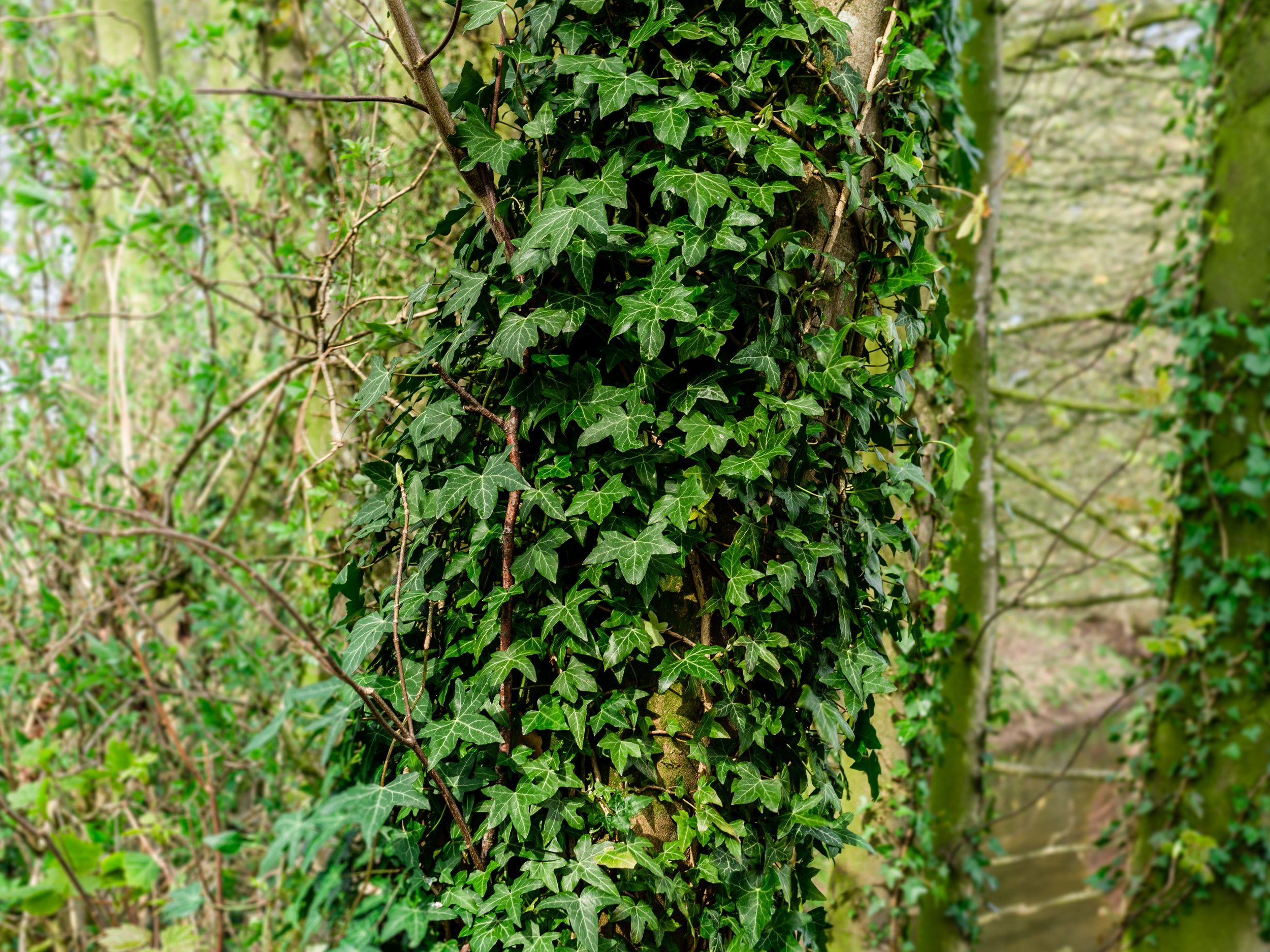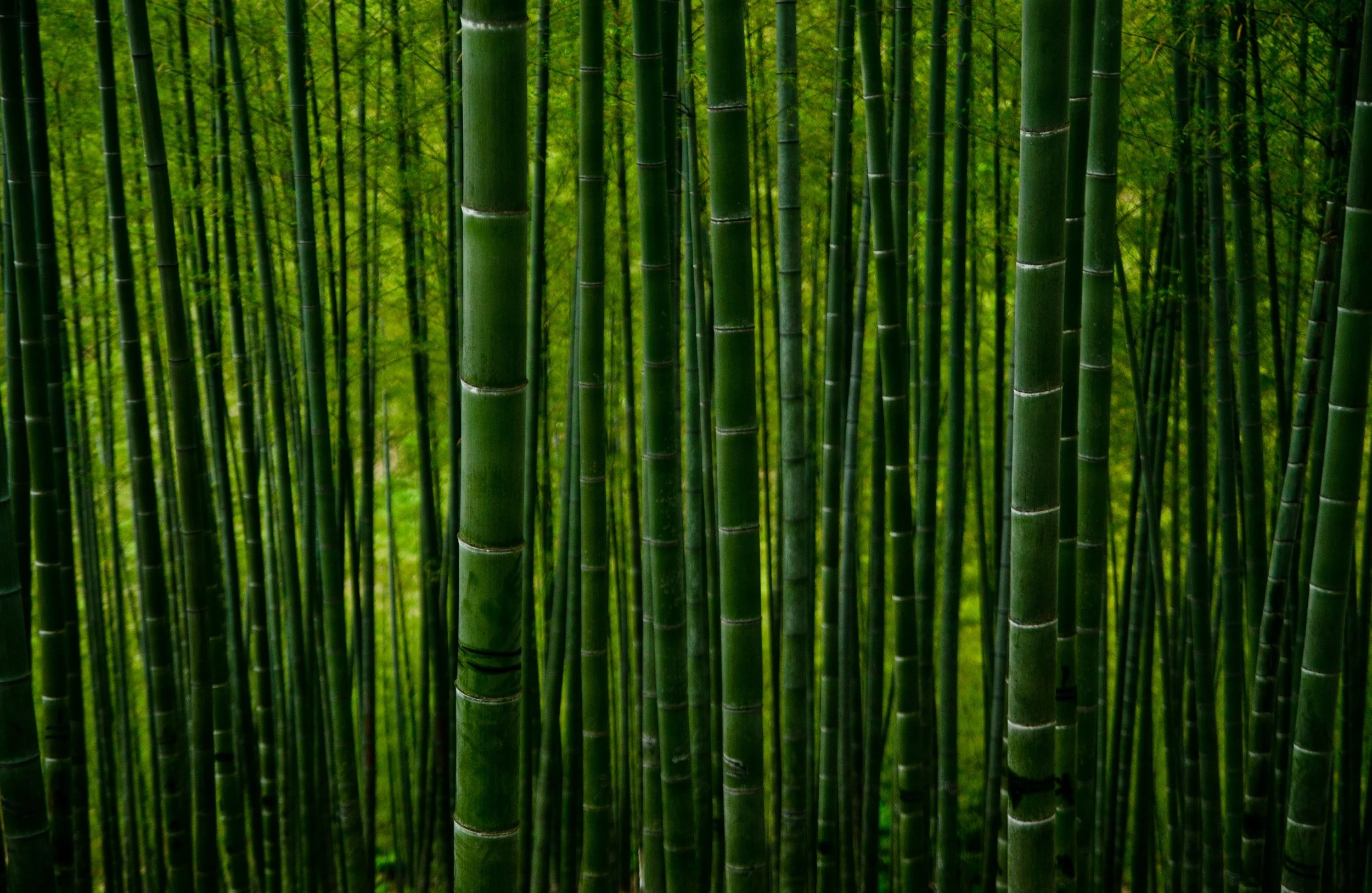
Invasive plants are threatening our trees.
How? Where? Why?
Simply put, we’ve been importing non-native plant species to the North American continent since the Europeans made contact. Sometimes this was done deliberately — for example, plants like Garlic mustard that immigrants used as medicinal herbs — and sometimes it happened accidentally . . . like Japanese stiltgrass, which was used as packing material in shipping crates and viable seeds escaped upon arrival.
The majority of imported plants have caused little to no harm. Unfortunately, many of them have caused tremendous damage, and the pace of devastation is accelerating rapidly.
To clarify, a few definitions. For the purposes of the U.S.A.:
native — the species was in a specific area pre-contact (i.e., before 1492)
non-native — the species was introduced post-contact
invasive — non-native species that have become established in an area and cause economic and ecological harm, and present ongoing management issues
Non-native plants become invasive when they are able to spread, either by seeds or rhizomes, and have no natural predators or diseases that keep them in check. In other words, in our local ecosystem, nothing eats or destroys them. This enables the invasive plants to out-compete our native plants; which are kept in balance by our local wildlife; and rapidly take over entire forests, meadows, and farms.
We call this the Danger Zone — it’s what we didn’t know we didn’t know.
Franklin Park & Forest “Dirty Dozen”
Here are the 12 (ok, more than 12) most common landscaping plants in our Franklin Park & Forest gardens that are actually listed as invasive species in Virginia and/or surrounding states, and are causing massive damage to our local parks, woodlands, farms, pollinators, and wildlife.
Most of these plants became popular garden plants in or soon after the 1950s, before the impact of invasive species became fully understood.
Sadly, all of these plants are still available for sale in Virginia. And many unknowing landscape contractors and homeowners continue to place them into new gardens.
While you may think these plants are safely contained in your garden, they are not. Birds, wind, and storm runoff disperse the seeds far and wide into our forests, farms, and natural areas. Visit any nearby park or wooded lot, and you will see the infestations that are costing taxpayers millions of dollars for remediation.
You can help save our trees and wildlife — and help mitigate climate change — by removing these plants from your yard and replacing them with a suitable native species.
The descriptons below come from the Wikipedia entry for each species or the Center for Invasive Species and Ecosystem Health.
-

Amur honeysuckle
In the understories of deciduous woodlands of the eastern United States it forms dense thickets, the shade of whose canopies prevent the growth of native shrubs, juvenile trees, and wild flowers. Uncontrolled, these growths result in almost monocultural thickets of Amur honeysuckle. The species gravely jeopardizes not only the diversity of the invaded ecosystems but even the regeneration of woodlands, because it reduces the growth and diversity of native seedlings. Additional studies indicate that it negatively affects birds and tadpoles.
-

Asian wisteria
The hard, woody vines twine tightly around host tree trunks and branches and cut through bark, causing death by girdling. On the ground, new vines germinating from seed or sprouting from rootstocks form dense thickets that smother and shade out native vegetation and impede natural plant community development. As girdled trees die, canopy gaps are created which increase the amount of sunlight reaching the forest floor. While this may temporarily favor some native species, it also stimulates vigorous growth and spread of wisteria.
-

Beefsteak plant
Beefsteak plant grows along roadsides, ditches, forest margins, and on hillsides. It spreads to natural areas, especially disturbed areas. It can disrupt native ecosystems by outcompeting native plants. It is ordinarily avoided by cattle and has been implicated in cattle poisoning. Beefsteak plants are most toxic if cut and dried for hay late in the summer, during seed production.
-

Burning bush
Burning bush, also known as Winged spindle or Winged euonymus, can invade not only a variety of disturbed habitats including forest edges, old fields, and roadsides but also in undisturbed forests. Birds and other wildlife eat and disperse the fruit. Once established, it can form dense thickets, displacing native vegetation. It is native to northeastern Asia and was first introduced into North America in the 1860s for ornamental purposes. This plant is still sold and planted as an ornamental.
-

Callery (Bradford) pear
Invasive pears gain a foothold in agricultural or natural areas. Because they flower and set seed as young as three to five years old, they quickly spread and replace desirable plants in invaded areas. Once established in a fallow field or vacant lot, they bloom, fruit and sprout rapidly into thorny thickets and spread rapidly to assault new land. As with other woody invaders, pears threaten pastures and fields because grazing livestock do not eat them. If a farmer attempts to mow or bush-hog these pernicious pears, the stout thorns can puncture the tractor’s tires. If cut down and not treated with herbicide, new trees grow from the roots.
-

Chinese privet/Border privet
Plants form dense thickets; invading fields, fencerows, roadsides, forest understories, and riparian sites. They can shade out and exclude native understory species, perhaps even reducing tree recruitment. Native to Europe and Asia, Chinese privet was introduced in the United States in 1852 as an ornamental plant. It is commonly used as an ornamental shrub and for hedgerows.
-

Chinese silvergrass
Chinese silvergrass escapes from ornamental plantings and can form large clumps along disturbed areas, displacing native vegetation. The grass is also extremely flammable and increases fire risks of invaded areas. It is native to Asia and was introduced into the United States for ornamental purposes during the late 1800s.
-

English ivy
English ivy is an aggressive invader threatening all levels of forested and open areas, growing along the ground as well as into the forest canopy. Vines climb up tree trunks and envelop branches and twigs, blocking sunlight from the host tree’s foliage, impeding photosynthesis. An infested tree will exhibit decline for years before it dies. The weight of vines also makes trees susceptible to blowing over in storms. This plant has been confirmed as a reservoir for bacterial leaf scorch (Xylella fastidiosa), which affects a wide variety of trees.
-

Japanese barberry
Japanese barberry invades a variety of habitats from shaded woodlands to open fields and wetlands. It is rapidly spread by birds that eat the berries thus dispersing the seeds. Since barberry is a low, dense shrub, it creates a microclimate habitat favored by ticks, buffering extreme temperature and humidity fluctuations in comparison to relatively taller and less dense native vegetation. Animals, including the primary reservoir of Lyme, the white-footed mouse, also find refuge under or around barberry, creating a higher density of Lyme-infected ticks. It is native to Asia and was first introduced into The United States in 1864 as an ornamental. It is still widely planted for landscaping and hedges.
-

Japanese spirea
Japanese spirea invades a variety of habitats including fields, forests, stream banks and many disturbed areas. Once established, it can form dense stands which displace native vegetation and close open areas. It is native to eastern Asia and was first introduced into the United States around 1879 as an ornamental.
-

Leatherleaf mahonia
Leatherleaf mahonia has large, sharp, holly-like leaves and produces yellow flower clusters in February, followed by purple berries. Birds eat the berries and disperse the seeds. It is native to China and has been planted as a showy ornamental in the USA. Leatherleaf mahonia is now invading woodlands in the southern United States. Volunteer plants are showing up in ditches and alongside the streets in Franklin Park.
-

Linden arrowwood
Shrubs can grow over 15 ft. high in thickets that cast dense shade, suppressing native shrubs, small trees and herbaceous vegetation. A dense cover of young plants produced from seed and vegetative re-growth often blankets the ground in infested areas. Linden viburnum leafs out earlier in the spring and keeps its leaves later into the fall than most native vegetation, giving it a competitive advantage.
-

Mimosa
Mimosa invades any type of disturbed habitat. It is commonly found in old fields, stream banks, and roadsides. Once established, mimosa is difficult to remove due to the long lived seeds and its ability to re-sprout vigorously. Albizia julibrissin is native to Asia and was first introduced into the U.S. in 1745. It has been widely used as an ornamental.
-

Moneywort (Creeping Jenny)
Creeping Jenny can be found in a variety of different habitat types; however, it grows most vigorously and poses the biggest threat in moist areas such as wet meadows, swamps, floodplain forests, stream banks, bottoms, ditches, roadsides and along the banks of small water bodies. It can form a mat-like growth capable of excluding more desirable native plant species. It is now found across the United States and Canada.
-

Nandina
Nandina, or Heavenly bamboo, is shade tolerant, which allows it to invade forest edges and interiors. Birds eat the berries and disperse the seeds. The berries are toxic to Cedar waxwings, one of our beautiful songbirds. Nandina is native to eastern Asia and India and was first introduced to North America in the early 1800s. It has been planted widely as an ornamental and often escapes from old plantings.
-

Norway maple
Norway maple is able to shade out native understory vegetation such as spring ephemerals, and eventually out-competes native tree species in the forest canopy. It is a prolific seed producer, and the wind disperse the seeds far and wide. Thus, it can reduce native species diversity and change the structure of forest habitats.
-

Royal paulownia
Royal paulownia is an aggressive tree that invades disturbed natural areas including forests, roadsides, and stream banks. It is native to China and was first introduced into the United States as an ornamental in 1840.
-

Running bamboo
Running bamboo infestations are commonly found around old homesites and can rapidly expand in size. Bamboo can form dense, monocultural thickets that displace native species, prevent sunlight from reaching the forest floor, and prohibit native trees from regenerating the forest. Once this plant is established, it is difficult to remove. It is native to China and was first introduced into the United States in 1882 for ornamental purposes.
-

Vinca
Vinca, also called periwinkle, has few pests or diseases outside its native range and is classified as an invasive species in many parts of North America. It forms dense mats that smother other plants and prevent native seeds from reaching the soil and germinating. Once established, it is difficult to eradicate, as its waxy leaves shed most water-based herbicide sprays.
-

White mulberry
White mulberrry is found throughout the United States, where it invades old fields, urban lots, roadsides, forest edges, and other disturbed areas. It poses an ecological threat by displacing native species, possibly hybridizing with and transmitting a root disease to the native Red mulberry. White mulberry is native to Asia and was introduced in colonial times as a food source for silkworms.
-

Wintercreeper
Wintercreeper is a vigorous vine that invades forest openings and margins. It grows across the ground, displacing herbaceous plants and seedlings, and climbs trees high into the tree canopy by clinging to the bark. Wintercreeper can overtake the underlying tree and the sheer weight of the vines renders the tree vulnerable to breakage during storms. Forest openings; caused by wind, insects, or fire; are especially vulnerable to invasion. Wintercreeper has been reported to be invasive in natural areas in most of the states in the eastern half of the U.S. It can tolerate a broad range of environmental conditions ranging from full sun to deep shade.